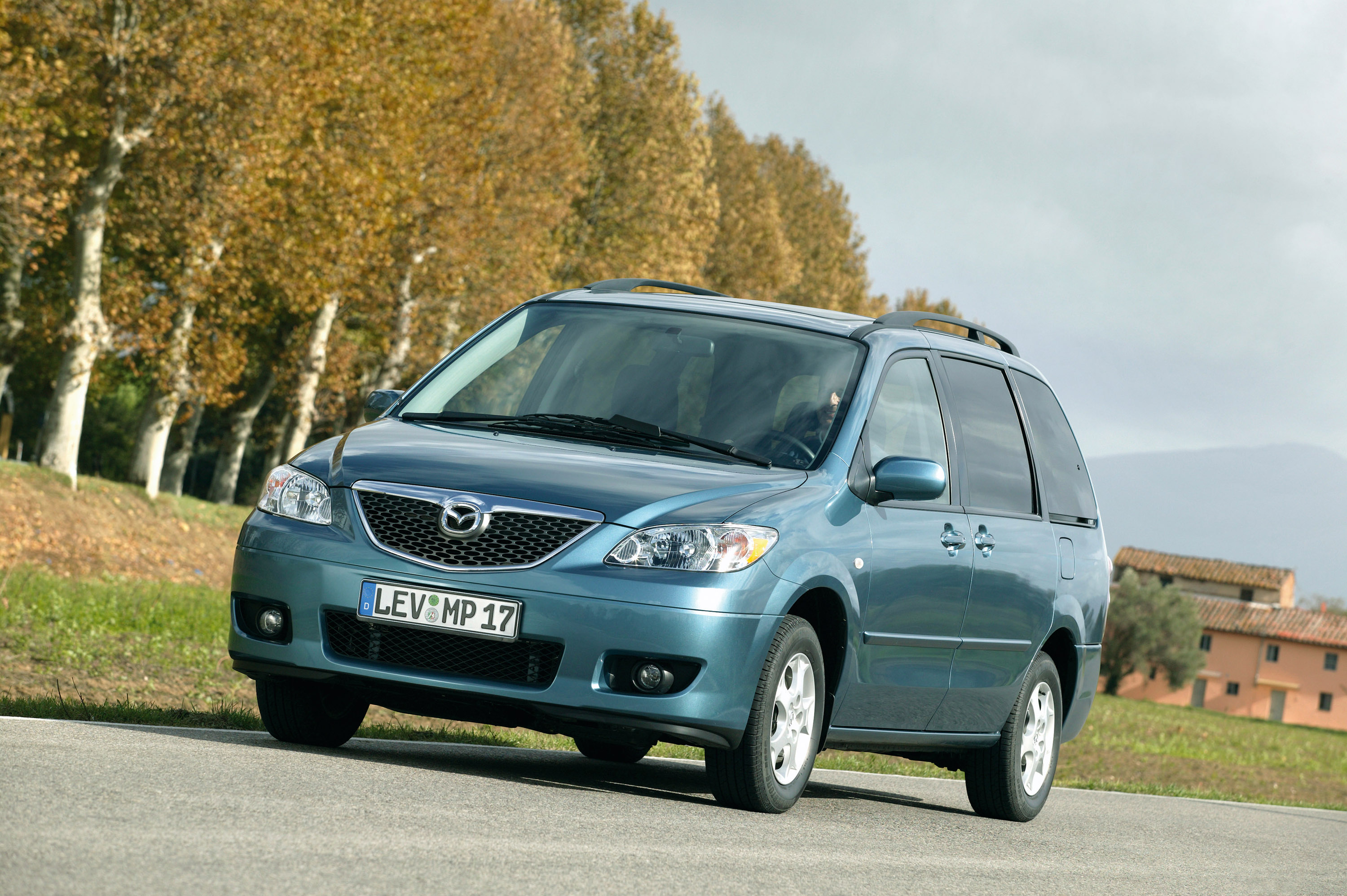
As presently constructed, even with all of its changes, it will remain a minivan. But its wide body rendered it kite-like in high winds, thereby requiring a bit of a struggle at the steering wheel to keep it on the straight and narrow. There was little difficulty turning the MPV ES around in tight spots in the Allegheny Mountains. But in the highlands that engine develops a bit of a whine relieved only by dropping its five-speed, overdrive automatic transmission into third or second gear. The front-wheel-drive vehicle’s 200-horsepower, V-6 engine is more than competent for highway travel, especially in the flatlands. That is not to say that the MPV ES is a slug.
#2004 MAZDA MPV MANUAL#
Myriad interior changes - including new fabrics, new headrests, a more ergonomically designed instrument panel and the addition of a standard rear air conditioner - also support the illusion that the new MPV is something more glamorous than a minivan.īut illusion is illusion, even when it comes with sporty 17-inch wheels (on the tested MPV ES), or attractive 16-inch wheels on the LX model.īeneath all of that puffery is a healthy helping of traditional minivan practicality including multiple cup holders and storage spaces, manual folding bench third-row seats, power sliding side doors granting easy mid- and rear-cabin access for children and grandparents, and that good ol’, telltale minivan rear hatch.Īnd if “sporty” implies brisk speed and crisp handling, well then, it remains a b it of a stretch to apply the term to the MPV ES. Other cosmetic surgery, including new bumpers and backlights, give the MPV’s rear end a tight, sporty look. With its restyled headlights, new hood, more muscular front fenders and new, more aggressive-looking grille, the 2004 Mazda MPV looks less like a minivan than previous models do. Mazda has a point, at least in contending that its new MPV is not “run-of-the-mill.” “The Mazda MPV would be more accurately called a large sport wagon with seating for seven than a run-of-the-mill, grocery-carting minivan,” the company says in its MPV press materials. That is why Mazda is begging consumers to think of its new MPV as anything but a minivan, SUV or ordinary station wagon. Favorable public perception is needed for retail glory. The tested 2004 Mazda MPV does all of those things quite well. Children and adults still have a need to transport themselves and their things, often in large numbers.

Families still consist of children and adults. Thus, the term “station wagon” joined the list of opprobrious automotive nomenclature along with “SUV” and “minivan.”īut although fashions change, basic transportation needs seldom do. Station wagons, at least as a vehicle category, died in the energy crises of the 1970s and never quite rose from that grave. SUVs eventually supplanted the tubular vans as favored family haulers but SUVs also became successful enough to engender public enmity. Station wagons seemed nonexistent.īut popularity often is a predecessor to contempt and in due time, minivans became contemptible to many auto buyers for reasons having nothing to do with their intrinsic value.

created the minivan market in the United States with the introduction of its Caravan and Voyager models. Mazda introduced its MPV family vehicle in 1988 in a bid to have it taken seriously as a minivan.


 0 kommentar(er)
0 kommentar(er)
